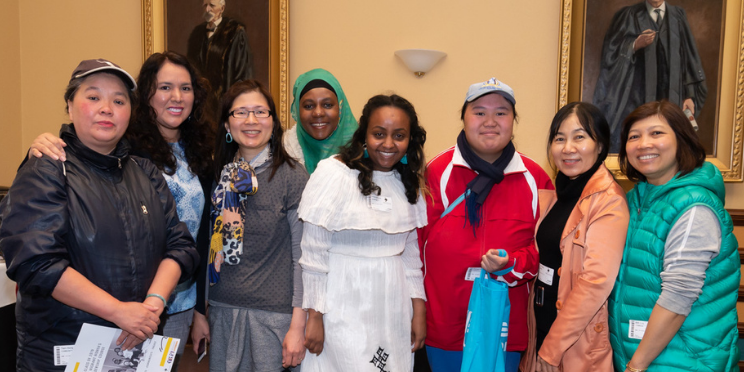
COVID-19 has been tough on migrant women. Our communities have been more exposed to the virus and have had less access to the in-language information they need to protect themselves and their families from COVID-19 infection. A clear indicator of this health inequity is that in Victoria, 52% of COVID-19 infections were among women, and about half were in people born overseas. This is a significant over-representation. These numbers don’t include the children in migrant families who were born in Australia, so the actual health impact in our communities is even greater than it first looks.
There has also been an economic toll: 1.3 million Australian women, or 21% of the female workforce, have lost their jobs, or have experienced difficulties retaining their jobs. Job losses have been spread across many industries, but the largest numbers have been in accommodation and hospitality (95,000) and retail (57,000), two key industries in which migrant women are concentrated.
We were pleased to see some important initiatives in the Victorian 2020/21 budget last week that make some strong moves toward economic recovery for migrant women. Wage subsidies, free kinder and a new digital skills and jobs program should make a big difference to migrant women wanting to return to the workforce after COVID-19. The true test will be to make sure these wonderful initiatives are accessible to those who need them most, including migrant women who face the onerous barriers of race and gender discrimination in the workforce.
The provision of sick pay for casual and insecure workers will benefit the many migrant women working in insecure jobs. This won’t solve all the problems that arise due to precarious employment, but it will help women look after their health and wellbeing.
We have definitely made some great moves in the right direction, but there is still more to do. The next step is a focus on women’s health and wellbeing. We’re looking forward to seeing more investment in social services, especially women’s health and other women’s organisations; and we need the establishment of a multilingual health promotion infrastructure to make sure that the whole community has the information they need to stay well. We can definitely see the light at the end of the tunnel now, and we’re working to make sure it shines just as brightly for migrant women.
The WRAP is a monthly newsletter about migrant women’s issues. Subscribe to our mailing list here.
